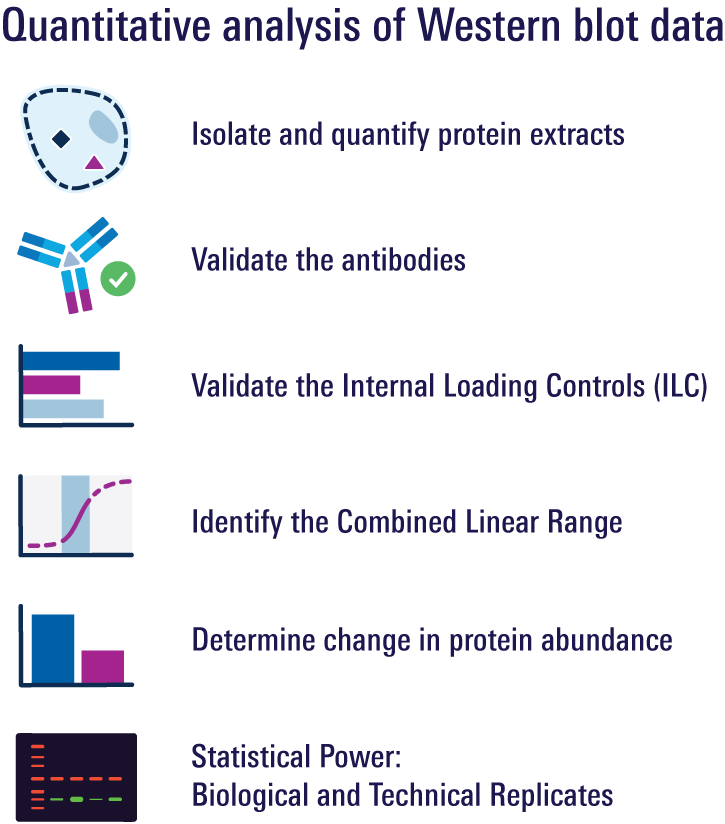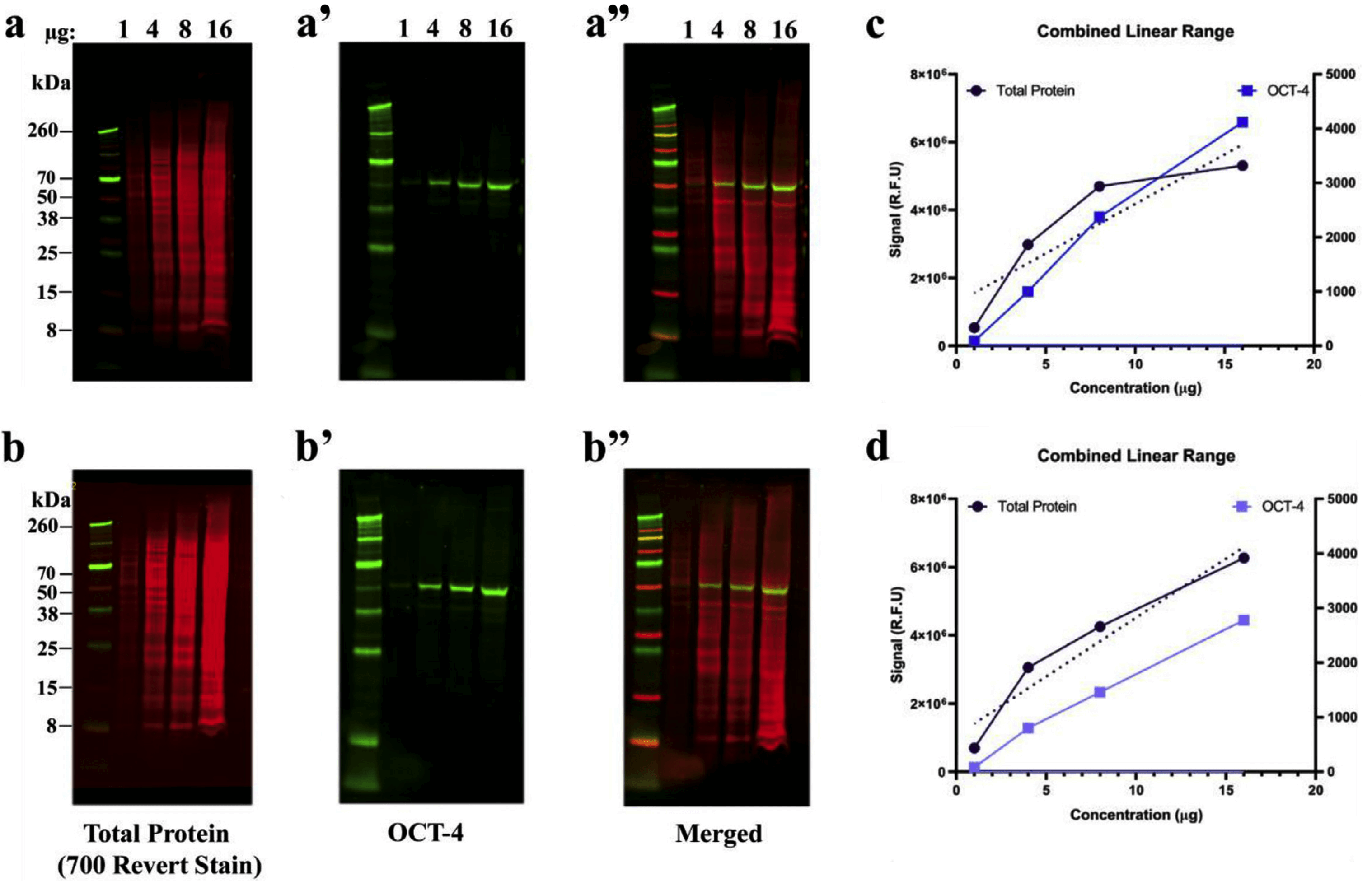
Original data examples and publication guidelines for each step are also provided and explained, ensuring that you are fully prepared before submitting your research. Refer to this guide as you work through your experimental design and analysis. Not only will you have more confidence in your data, but it will help ensure that you are in alignment with best practices.
This systematic guide helps you understand the most critical aspects in getting accurate, precise results. Take an in-depth look at the core concepts of Western blots — including linear range, housekeeping proteins (HKPs), and proper normalization techniques. Empirical calculations of the amount of protein to load onto a gel are highly important: ensuring that this amount is within the linear range can help ensure that your quantitation is accurate. You can also use an HKP, or single endogenous reference protein, as an internal loading control (ILC) but must first validate it. This makes sure that you have no variability in HKP expression that can introduce error into your analysis. Additionally, learn how to use normalization techniques to correct for unavoidable and small variations, such as sample concentration or cell number. By establishing a solid foundation and deep comprehension of these concepts, sources of error in your experimentation become minimal. Consequently, this guide can help enhance your data reproducibility and increase the likelihood of publication.

In addition to core concepts, you can follow the paper’s step-by-step systematic approach to help you get reliable data. This valuable resource explains the importance of validating primary antibodies and ILCs, post-translationally modified (PTM) proteins, and the linear range of detection. This guide also emphasizes that replicating your results is extremely important: it confirms that there is reproducibility or actual differences between samples—not experimental variability. Paired with original data examples, these easy-to-follow steps can guide your Western blots for useful quantitative results.
“A systematic approach to quantitative Western blot analysis” is a step-by-step workflow and the ideal resource for your lab. By helping to minimize error in Western blot methodology, it can guide you toward more precise data. A more unified procedure among members of the scientific community can help mitigate variation and increase overall reproducibility.
This paper also provides you with the latest publication guidelines, so you can meet standards and obtain publishable data. Altogether, it is an essential resource that covers the core concepts in Western blotting and a comprehensive strategy for more accurate, publishable results. Keep the paper on hand to not only enhance your own quantitative data but to encourage unified practices, minimize error, and produce publishable data in the global scientific community as a whole.
Powered by Froala Editor